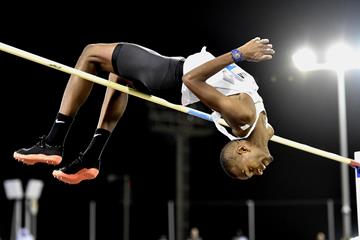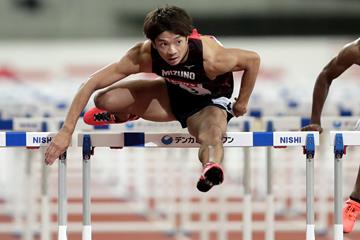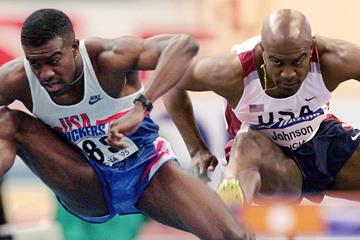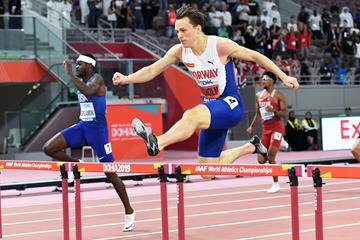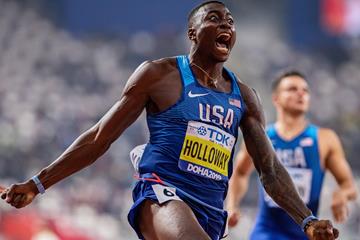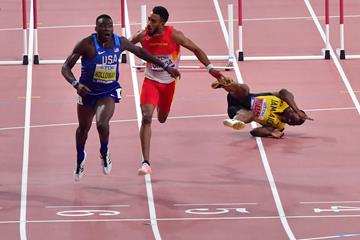 Countdown
Countdown
 Countdown
Countdown
The men’s sprint hurdles event is contested over a distance of 110m. Athletes compete in lanes and start in blocks, negotiating 10 hurdles of 3ft 6in (107cm).
A reaction time – measured by sensors in the starting pistol and on the blocks – of less than 0.1 is deemed a false start and runners will be recalled, with the responsible athlete disqualified.
Once the race is under way there is 13.72m to the first hurdle, 9.14m between hurdles thereafter, and 14.02m from the final hurdle to the finish.
The hurdles are knocked down easily if touched, which allows the athlete to continue the race even if he collides with them. But a runner can be disqualified if he steps out of his designated lane.
The finishing order is determined on time. The event requires speed, agility and precision. At major championships, the format of the men’s 110m hurdles typically consists of heats, semifinals and a final.
Wooden barriers were placed along a stretch of 100 yards in England during the 1830s. The universities of Oxford and Cambridge developed the event, increasing its distance to 120 yards (109.7m), which in turn was rounded up to 110m by the French in 1888.
The event has been contested at every modern Olympics since the inaugural Athens Games of 1896. The USA have dominated the event at the Olympics. For the first 23 editions, the US snared 18 gold medals – including two apiece for Lee Calhoun and Roger Kingdom. However, in the six editions between 2000 and 2021, the US claimed one solitary gold.
 USA
USA
 JAM
JAM
 USA
USA
 JPN
JPN
 USA
USA
 SUI
SUI
 USA
USA
 FRA
FRA
 FRA
FRA
 USA
USA
